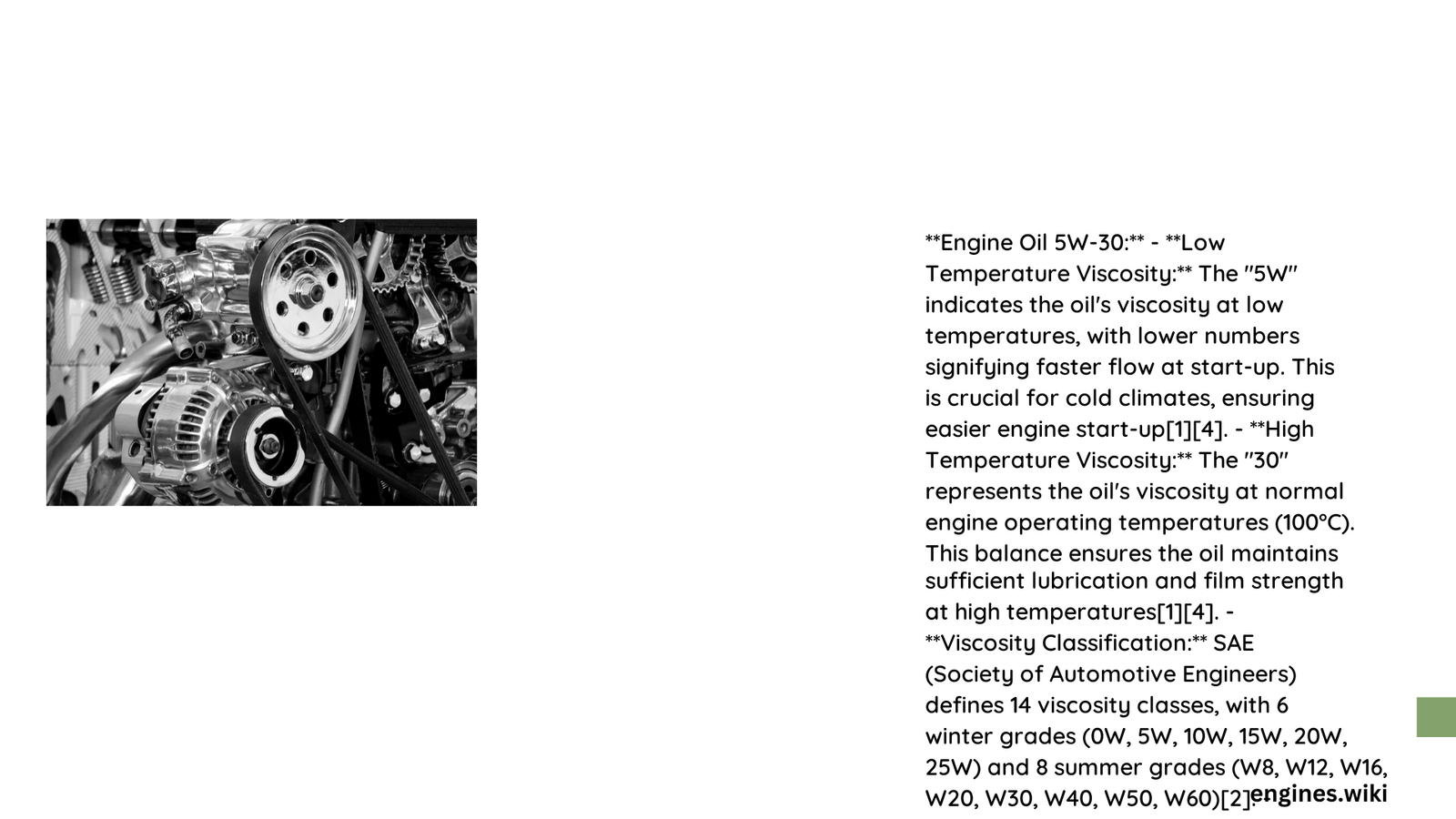Engine oil W ratings represent a critical technical specification that determines an oil’s performance across temperature ranges. These ratings, defined by the Society of Automotive Engineers (SAE), indicate how effectively motor oil flows and protects engine components during cold starts and high-temperature operations. Understanding these ratings helps vehicle owners select the most appropriate lubricant for their specific engine requirements and environmental conditions.
What Are Engine Oil W Ratings?
Engine oil W ratings represent a standardized measurement system that classifies motor oil’s viscosity performance. The ‘W’ specifically denotes winter performance, indicating how the oil behaves at lower temperatures.
How Do W Ratings Work?
| W Rating | Cold Temperature Performance | Typical Application |
|---|---|---|
| 0W | Excellent cold flow | Modern high-performance vehicles |
| 5W | Very good cold flow | Most passenger vehicles |
| 10W | Good cold flow | Older vehicle models |
| 15W | Standard cold flow | Limited modern applications |
Why W Ratings Matter for Engine Protection
Vehicle engines require consistent lubrication across diverse temperature conditions. W ratings ensure:
- Rapid oil circulation during cold starts
- Reduced engine wear
- Improved fuel efficiency
- Enhanced engine longevity
Decoding W Rating Specifications

What Does the First Number Represent?
The number preceding ‘W’ indicates the oil’s cold-temperature viscosity. Lower numbers signify:
- Better cold-start performance
- Faster oil circulation
- Reduced engine stress during initial startup
- Improved fuel economy
What Does the Second Number Indicate?
The number following ‘W’ represents high-temperature viscosity:
- Higher numbers mean thicker oil at operating temperatures
- Indicates oil’s ability to maintain protective film
- Determines oil’s performance under heat and pressure
Selecting the Right W Rating
Which W Rating Suits Your Vehicle?
Factors influencing W rating selection include:
- Vehicle manufacturer recommendations
- Climate conditions
- Engine age and design
- Driving patterns
- Maintenance history
Recommended W Ratings by Vehicle Type
- Modern Passenger Cars: 0W-20, 5W-30
- Performance Vehicles: 5W-40, 10W-40
- Diesel Engines: 15W-40
- Extreme Cold Regions: 0W-16, 0W-20
Technical Considerations
Performance Beyond W Ratings
While W ratings are crucial, additional factors include:
- API service classifications
- Additive packages
- Synthetic vs. conventional formulations
- Manufacturer-specific requirements
Common Misconceptions
Myths About W Ratings
- Myth: Lower W rating always means better oil
- Reality: Proper selection depends on multiple factors
Best Practices
- Consult vehicle manual
- Consider local climate
- Follow manufacturer recommendations
- Regular oil analysis
Advanced Insights
Future of W Ratings
Emerging trends include:
- Lower viscosity oils
- Enhanced synthetic formulations
- Improved fuel efficiency standards
- Reduced environmental impact
Conclusion
Understanding engine oil W ratings empowers vehicle owners to make informed maintenance decisions, protecting their investment and ensuring optimal engine performance.
